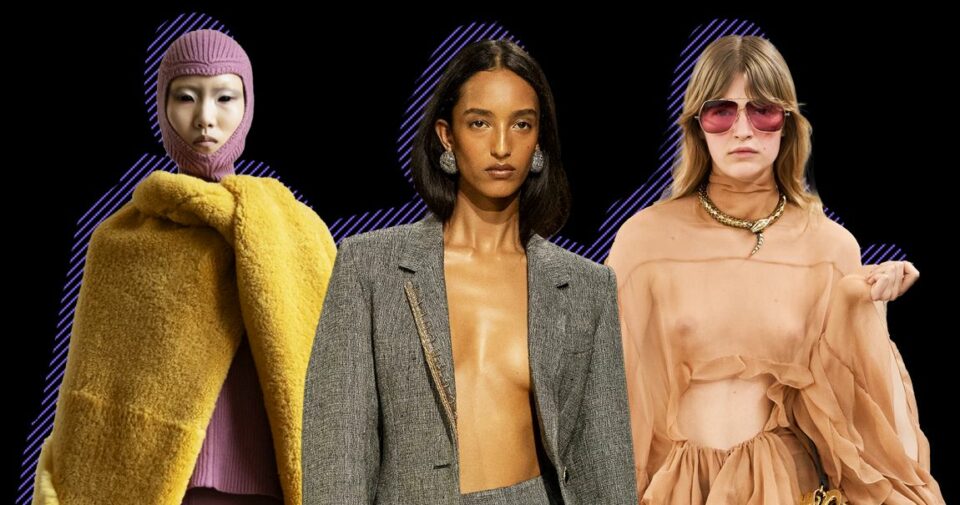Blowing through Chloé, by its new designer, Chemena Kamali, were the hot winds of Paris in the late ’70s and Karl Lagerfeld. Look closely at Daniel Roseberry’s swaggering peacoats and troupe l’oeil dresses with inlaid female bodies for Schiaparelli, and you see the spirit of the Americans Bill Blass and Geoffrey Beene. And lying behind Rick Owens’s bizarrely elegant shapes are Thuvia, Maid of Mars, and Llana of Gathol, characters in the stories his father read to him in central California, and which spurred his desire to leave, eventually reaching Paris.
These designers certainly know where the bodies are buried, and they know how to call them up and convert them into something new. Above all, each knows how to create a universe that others would die to enter.
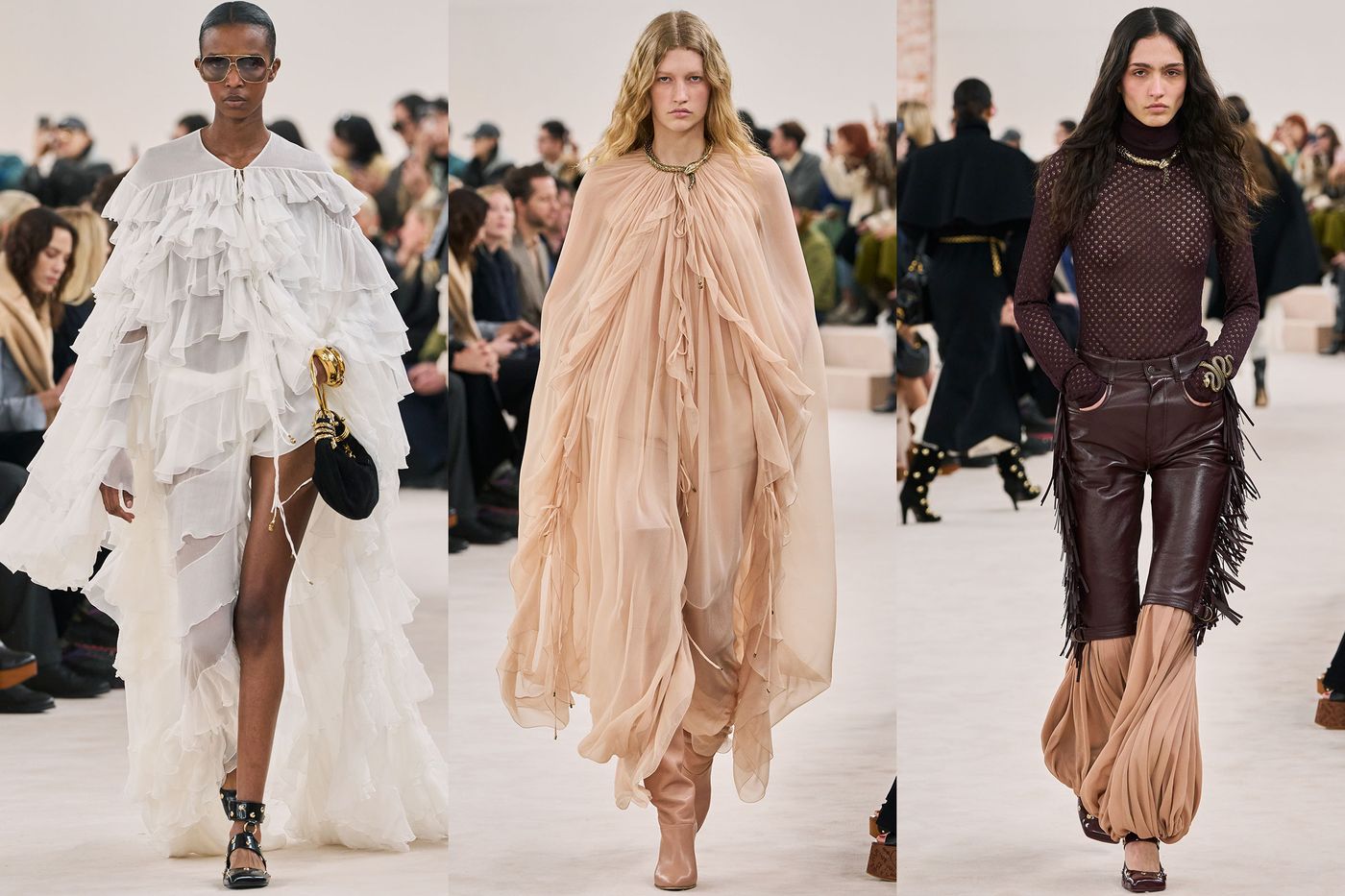
We know this about Owens, who first hit Paris 25 years ago and set up his studio and home in a building overlooking the Place du Palais Bourbon, in the heart of the old aristocratic quarter. Owens showed his women’s fall 2024 collection in those rooms, where the parquet floors haven’t been refinished nor the moldings brightened, and the models’ leather boots, which have the padded look of a duvet but the shape of a chimney pot, made a scuff-scuff sound as they crossed the floor. As for his alien-looking clothes, they are, possibly, better than ever.
Thursday’s main event, though, was the debut of Kamali at Chloé. The German-born designer, 42, has a long résumé, including an early stint at the label under Phoebe Philo and then with Clare Waight Keller before working for many years at Saint Laurent.
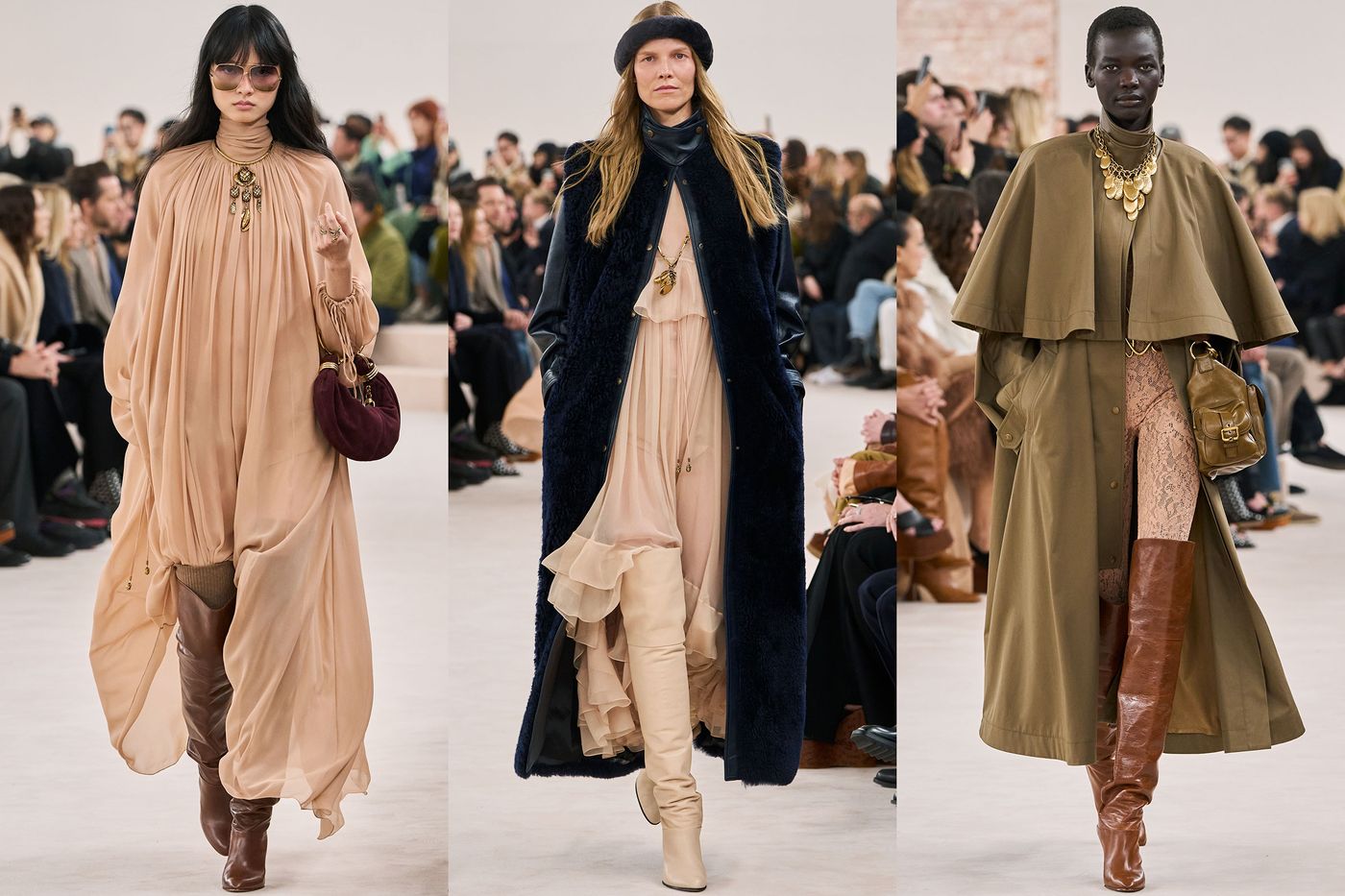
“It feels like a natural coming home,” a breathless Kamali said backstage, after saying hello to Jerry Hall and her daughter Georgia May Jagger. Minutes before, she had been down on one knee talking to her 5-year-old son (she has another boy, age 2), who chattered that he now understood why she had been working so much and hadn’t always been home in the evening.
Without so much as a backward glance at the Gabriela Hearst period at Chloé, which always seemed heavy on luxe leather coats and long, penitent dresses, Kamali got out her broom and swept away its memory. She returned, at least in attitude to some of the Lagerfeld years, sending out diaphanous dresses and tops in black, white, and blush-colored chiffon and lace, sometimes with cascading ruffles and extra-long sleeves, and often anchored by well-cut trousers with flared hems, baggy jeans, or silk shorts with over-the-knee boots.
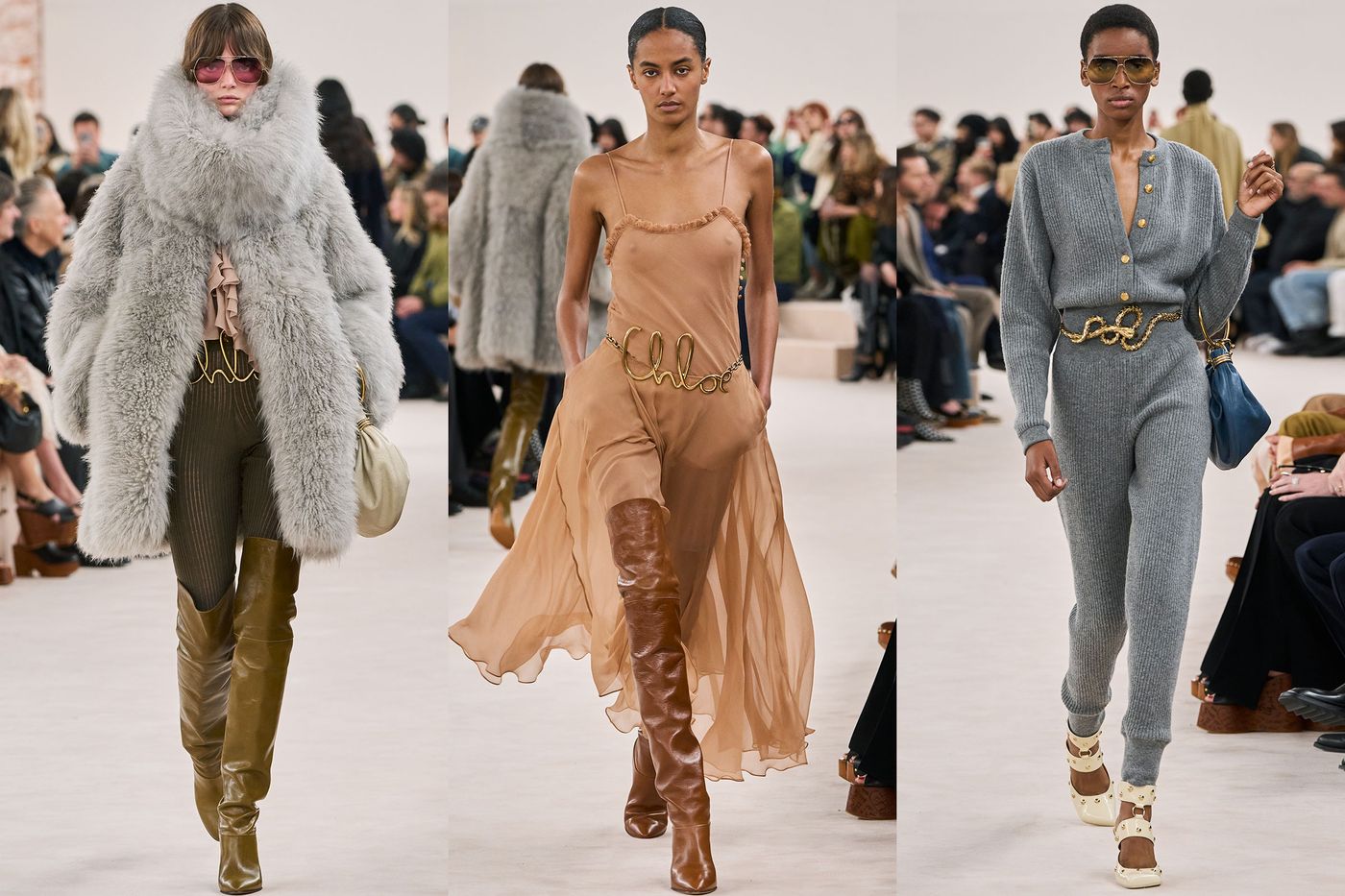
Also quieting the romance were crisp capes of all shapes and textures, a long black shearling coat with a high neck (a trend this season), and a brown herringbone blazer with the same kind of collar.
As debuts go, Kamali could not have done better. The rousing applause said so. She established a new voice, based on the Chloé language. And she didn’t ease into this collection. She marched into it, like the models beating around the room in their frills and musketeer boots. And that confidence is really what matters. Because it makes you curious: What will Chemena Kamali show us next?

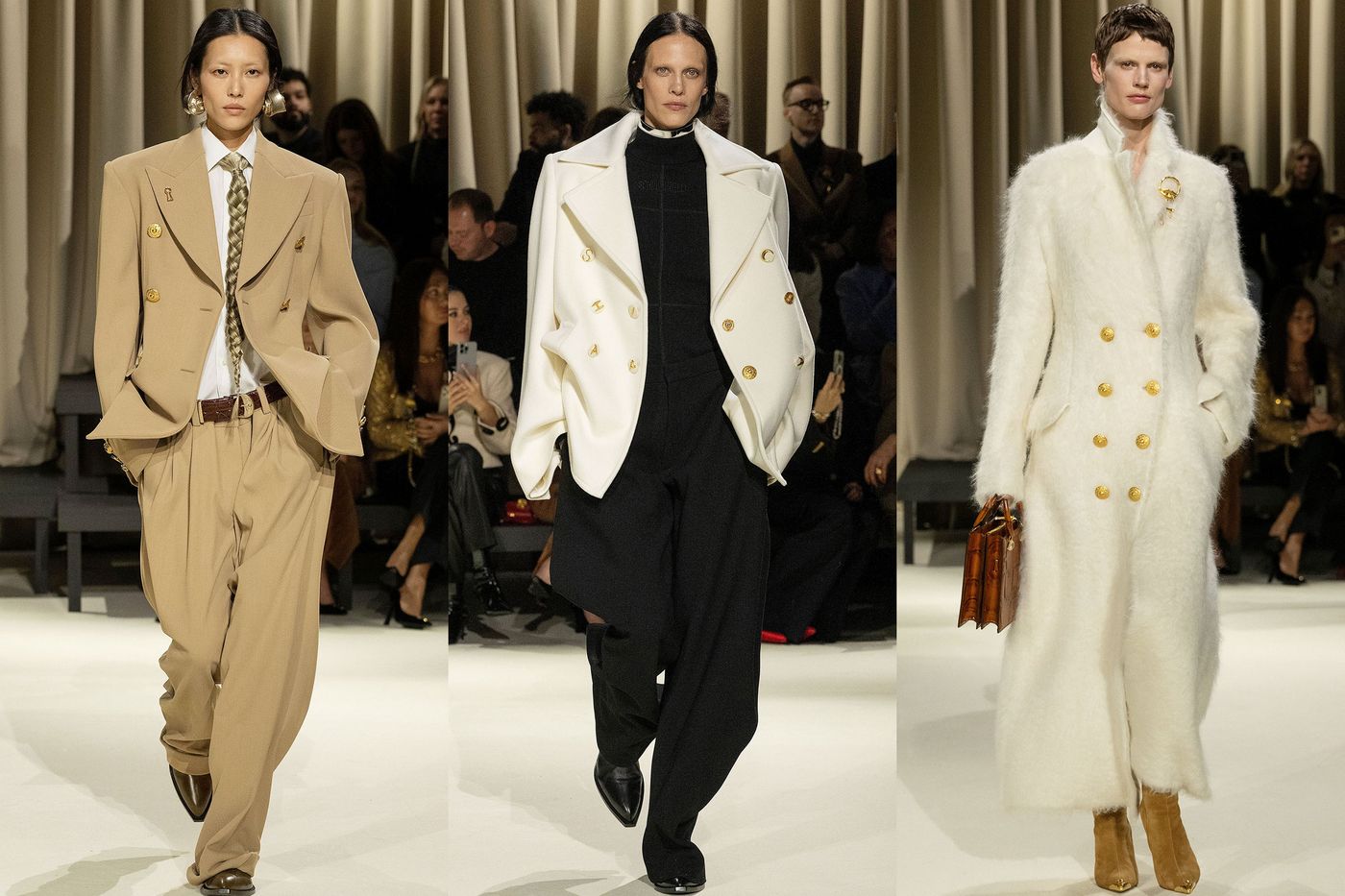
With its lobster motifs, sneakers, turbans, and deep red lips, Roseberry admits, last season’s ready-to-wear verged on camp. “We had high visibility” in terms of media attention, he said before his fall show, on Thursday night. But “In my mind, I thought, Let’s walk away from visibility and add ease.”
Schiaparelli’s couture shows supply him with plenty of creative oxygen, and the fact that they are so daring and unpredictable has raised the house’s profile. But he’s realized that ready-to-wear need not — should not — cause the same delirium. “It’s about finding a more straightforward and subtle way to dress women,” Roseberry said.
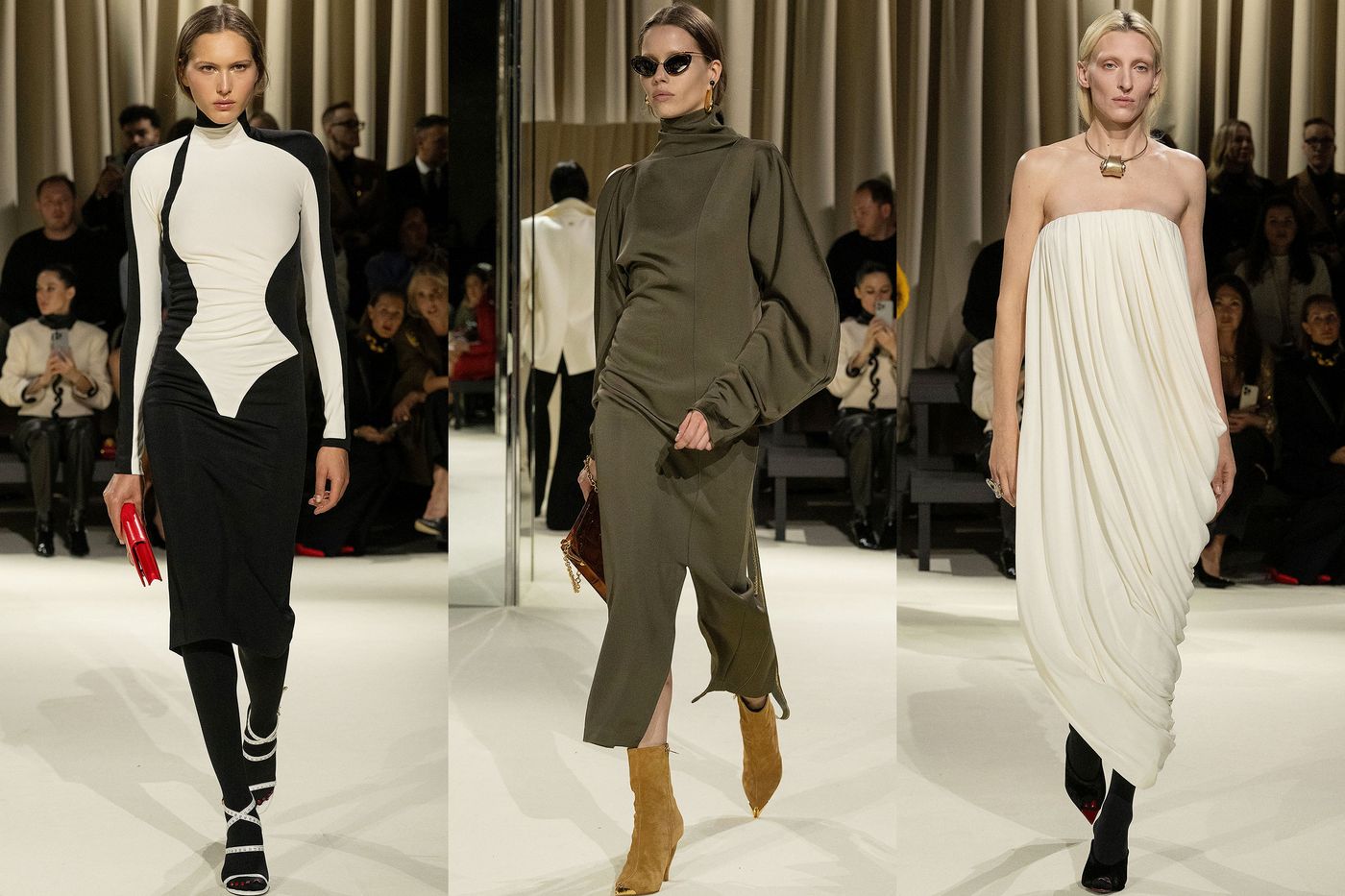
Buried in the last show was a pin-striped navy suit, which may have sparked the suits that opened last night’s show, except the cut was now looser, with relaxed, wide-leg trousers that draped over cowboy boots. The fabrics included a lightweight tan gabardine and a mottled gray linen and wool, and the adornment was confined to gold bijoux buttons and the tiniest bit of gold embroidery along the lapels — of Elsa Schiaparelli’s famous tape measure motif. In the past, the details would have stood out. But now it was about the cool look of the silhouette. And while many words have been applied to Roseberry’s Schiaparelli, “cool” has not been one of them.
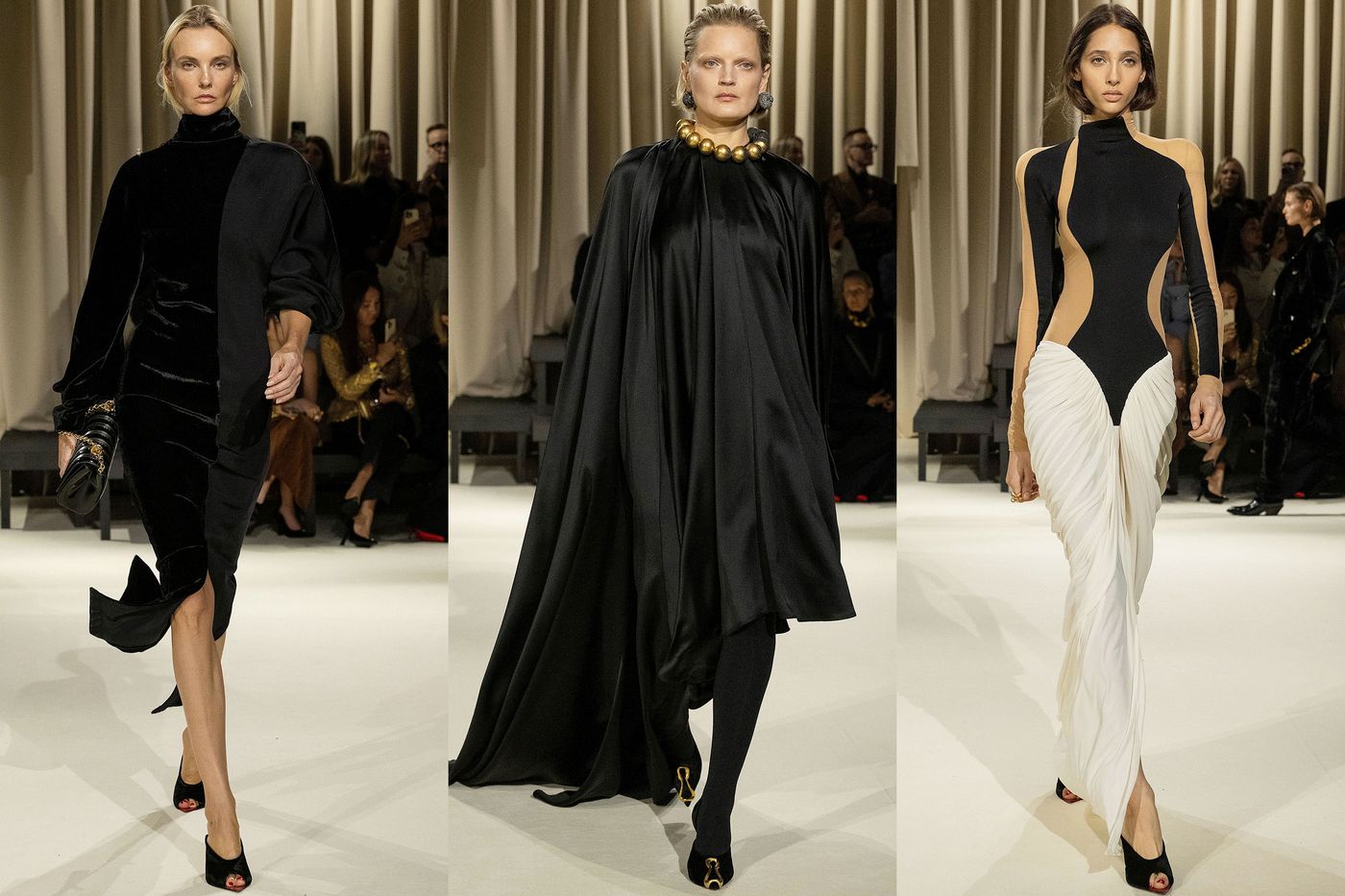
So the suits were a great start in the direction he wants to go. Also strong were swingy peacoats in navy or off-white; snug puffer jackets; the clingy trompe l’oeil “body” dresses, especially one in black velvet; and an asymmetrically draped evening dress in black satin. The clothes still catch the Schiaparelli vibe but without the excess of embellishment, which was verging on parody. And though it’s hard to think of anything the show missed, it would be great to see more separates and day dresses — and not necessarily the structured, killer kind.

In his show notes, Owens wrote that in interviews he mentioned that his stern father did not allow a TV in the family’s home in Porterville, California: “But I underplayed the significance of what he replaced it with — opera, stories of aching, longing and disappointment, set to rapturous music … by Puccini, Wagner, Purcell, Strauss … And every evening he would softly read Edgar Rice Burroughs paperbacks to me.”
This explains a lot about the majesty of Owens’s latest collection, which ran to a synthesized version of Ravel’s “Pavane for a Dead Princess,” and how his designs have acquired depth. The underpinnings of this collection were quite minimalist — full bodysuits in recycled cashmere or felted alpaca, fishtail knit skirts, and a long, plain dress in an exquisitely dull Owens’s type of dusty rose.
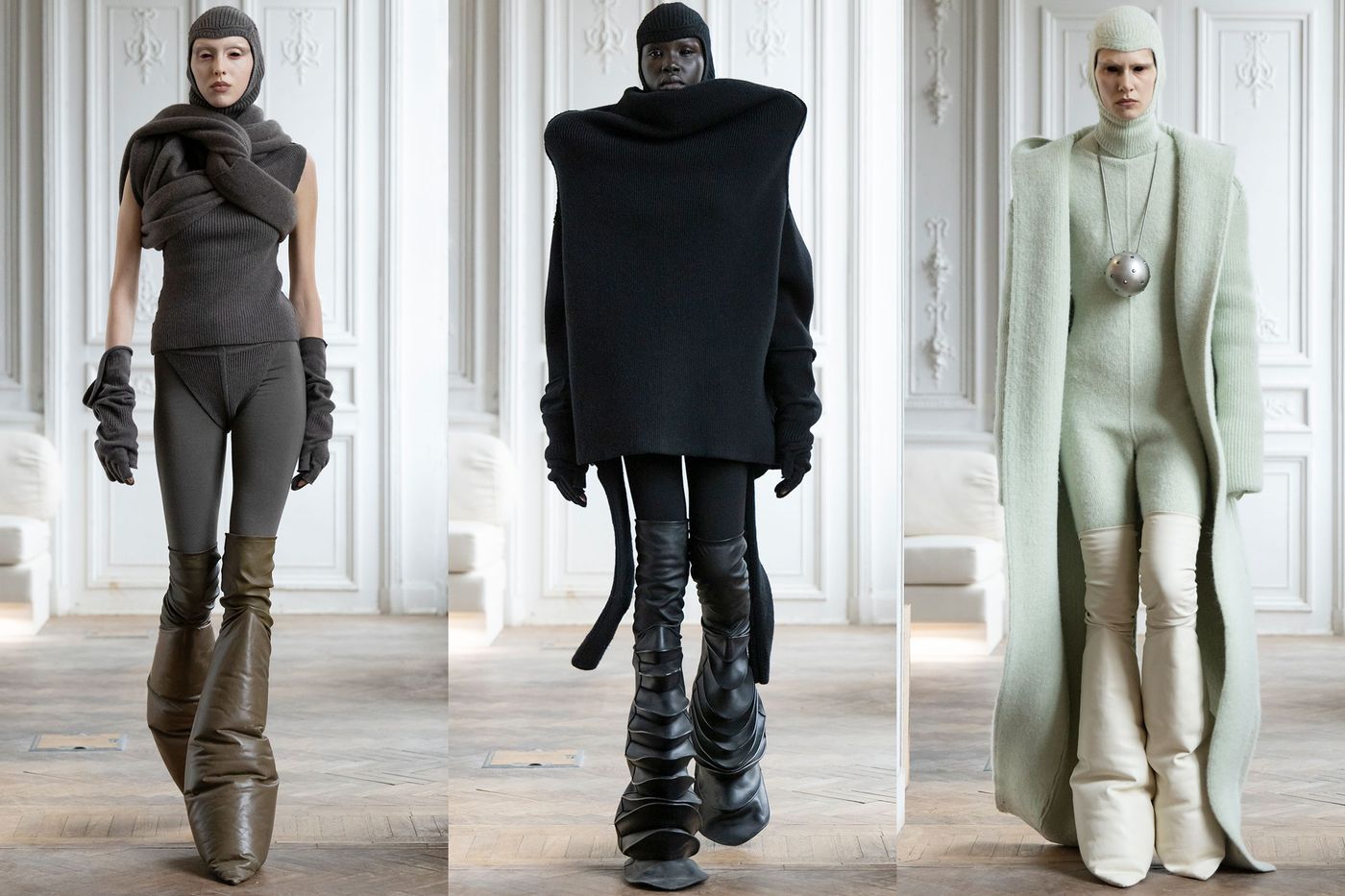
But knotted and bundled around many of these “spacesuits,” as Owens calls his knitted onesies, were stoles that look transposed from historical glamour fashion, or perhaps monarchs. You don’t know with Owens; his ideas and images — all the way from Porterville — are so blended. But the effect was beguiling.
It should also be noted that Owens remains a rebel in all ways, as well as a dreamer. Some jackets and shrouds were made out of recycled bicycle tires. At the same time, some capes and mantles were cut from a heavy loden produced by a family mill in the Austrian Alps, using “purified glacier water,” according to the press notes. And shaggy, almost matted-looking coats, with strict lines that heightened their strange elegance, were made from “the longest alpaca fibers” and then felted and brushed out.
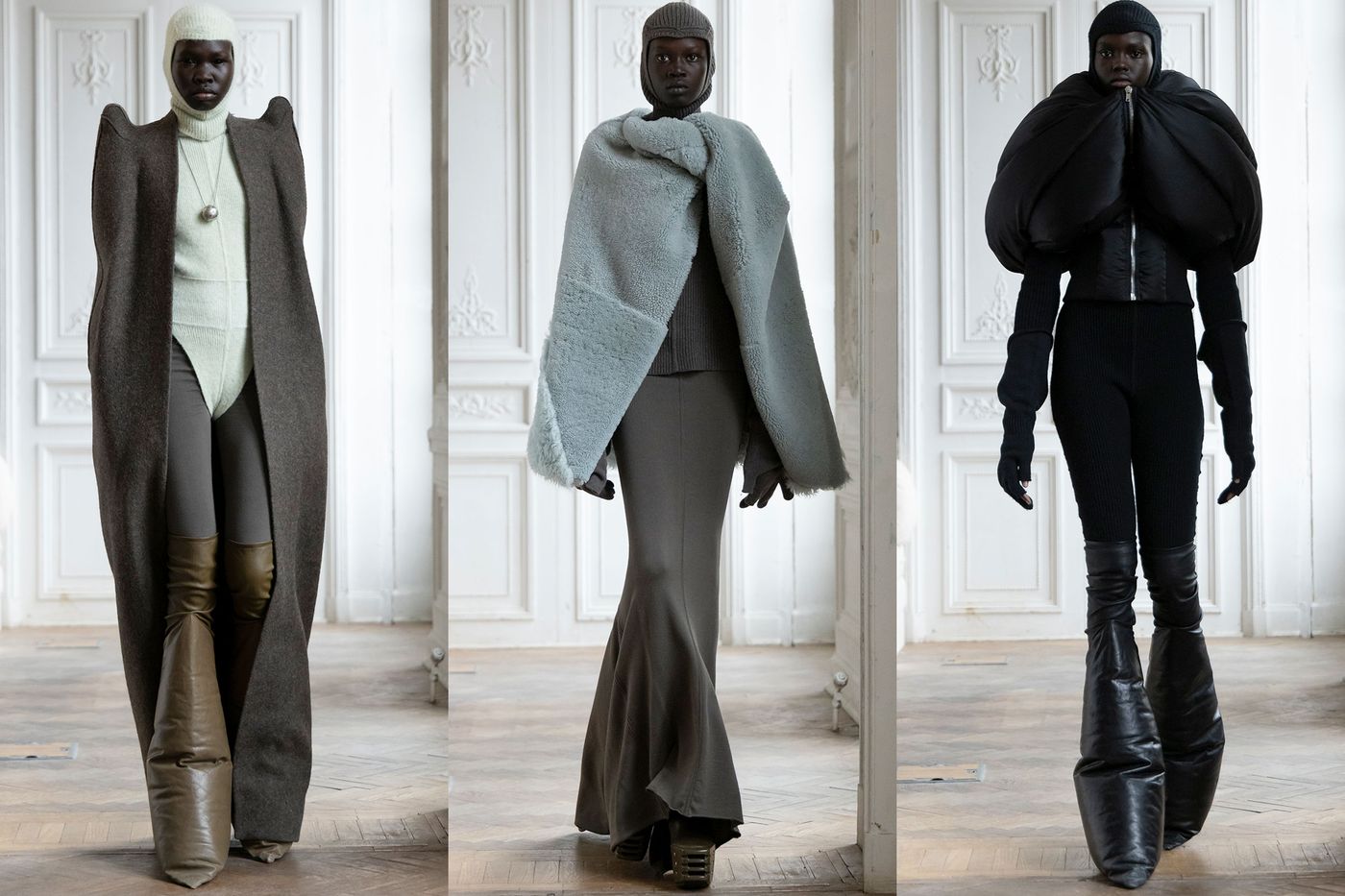
More From Paris Fashion Week
- The Best Street Style From Paris Fashion Week
- Dior Introduces Me to ‘Chaos’ Makeup
- To Be Transparent
Cathy Horyn , 2024-03-01 19:47:17
Source link
